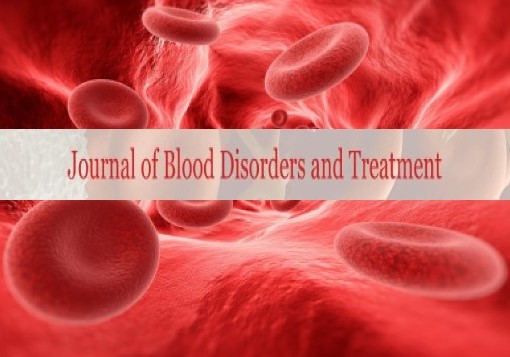Pure red cell aplasia
Received: 04-Feb-2023, Manuscript No. puljbdt-23-6255; Editor assigned: 06-Feb-2023, Pre QC No. puljbdt-23-6255 (PQ); Accepted Date: Feb 25, 2023; Reviewed: 10-Feb-2023 QC No. puljbdt-23-6255 (Q); Revised: 12-Feb-2023, Manuscript No. puljbdt-23-6255 (R); Published: 28-Feb-2023, DOI: 10.37532/puljbdt.2023.6 (1).07-08
Citation: Van A. Pure red cell aplasia. J. Blood Disord Treat. 2023;6(1):07-08.
This open-access article is distributed under the terms of the Creative Commons Attribution Non-Commercial License (CC BY-NC) (http://creativecommons.org/licenses/by-nc/4.0/), which permits reuse, distribution and reproduction of the article, provided that the original work is properly cited and the reuse is restricted to noncommercial purposes. For commercial reuse, contact reprints@pulsus.com
Abstract
The syndrome known as Pure Red Cell Aplasia (PRCA) is characterized by a severe reticulocytopenia, severe normocytic normochromic anemia, and a significant reduction or absence of erythroid precursors from the bone marrow. A congenital variant of PRCA is Diamond-Blackfan anemia
Keywords
Red Cell; Aplasia; Congenital
Introduction
A rare hematological disorder with numerous etiologies is called Pure Red Cell Aplasia (PRCA). The diversity of concurrent clinical features highlights the disease's complex nature. Aside from the typical idiopathic presentation, early detection of pathogenetic clues is crucial due to the consequences they have for both diagnosis and treatment. As a result, PRCA treatment varies and is solely based on the given clinical situation. Here, we offer a collection of clinical vignettes that highlight informative sample circumstances drawn from our everyday clinical practice. We review the diagnostic workup required for a precise diagnosis and the current therapeutic options using these illustrative clinical cases, addressing their applications in relation to the various PRCA-associated conditions and unique patient characteristics.
With the exception of DBA and virally mediated TAC, the majority of acquired PRCA cases, especially in adults, are idiopathic and thought to be a T cell-mediated process brought on by unidentified causes. In fact, to explain the absence of a hemolytic component, causative antibodies suggestive of an autoimmune process and potential pathogenic culprits would have to identify antigens exclusive to early erythroid precursors and missing from mature red cells. The use of Recombinant Human Erythropoietin (rhEPO), which was first documented in patients receiving this medication in the early 1990s, has been linked to a specific and extremely uncommon case of acquired PRCA. This phenomenon was connected to the use of leachates in the uncoated rubber stoppers of the prefilled syringes, according to later epidemiologic research. Upon realizing this and resolving it, rhEPO-associated PRCA. When this was identified and fixed, rhEPO-associated PRCA became incredibly uncommon. In addition to rhEPO, a number of other medications (such as rifampicin and diphenylhydantoin) have been anecdotally documented to cause hapten-based, Immunoglobulin G (IgG)-mediated, or directly toxic mechanisms of erythropoiesis inhibition. Finally, PRCA has been linked to other conditions such as Good syndrome, thymoma, and T-cell Large Granular Lymphocyte Leukemia (LGL). (i.e., cryoglobulinemia and thymoma). The management of such patients is also affected by the classic dyad of PRCA and thymoma (or, in some instances, a triad with myasthenia gravis).
PRCA is uncommon and extremely varied. The overlapping pathologic and clinical associations that appear to be responsible for this variety have not been the subject of systematic research. It is obvious that the rarity of the illness prevents the development of clinical experience based on data from clinical trials. Instead, case report and series retrospective analyses dominate contemporary practice. We evaluated the clinical presentations, pathophysiologic characteristics, and clinical responses to various therapeutic options using data from a significant number of PRCA patients seen in our center. Three-quarters of patients had PRCA linked to thymoma at the time of their surgical diagnosis. Even after thymoma resection, we should be on the lookout for PRCA, particularly in patients with incomplete resection or advanced disease. PRCA responded well to cyclosporine, but there were side effects associated with the medication, especially pneumonia. Treating PRCA associated with thymoma can be challenging because the condition's complications and course of therapy were combined in a complex way. The reasons of mortality in PRCA associated with thymoma were infection, cardiac failure, and thymoma, and the median overall survival was 142.1 months. A bad outcome was linked to immunosuppressive therapy resistance and anemia relapse. It has been demonstrated that cyclosporine maintenance treatments raise the danger of infection, organ failure, and cancer. In our research, all patients experienced pneumonia as a side effect of cyclosporine treatment, and four out of six patients passed away from the condition. The management of cyclosporine-related side effects may enhance the reasons of mortality in PRCA associated with thymoma were infection, cardiac failure, and thymoma, and the median overall survival was 142.1 months. A bad outcome was linked to immunosuppressive therapy resistance and anemia relapse.
It has been demonstrated that cyclosporine maintenance treatments raise the chance of infection, organ failure, and cancer. In our research, all patients experienced pneumonia as a side effect of cyclosporine treatment, and four out of 6 patients passed away from the condition. The prognosis of PRCA linked to thymoma may be enhanced by the therapy of cyclosporine-related complications. Prophylaxis against pneumocystis pneumonia should be given to patients getting immunosuppressive treatments. All of the patients in our research who received postoperative radiotherapy developed pneumonia, and four of these five patients passed away from the condition. Patients with pulmonary fibrosis brought on by postoperative radiotherapy should be carefully evaluated for postoperative radiotherapy because it may affect the development of pneumonia. In transfusion-dependent patients with aplastic anemia, iron chelation treatment with deferasirox for post-transfusion iron overload improved hematopoiesis.





